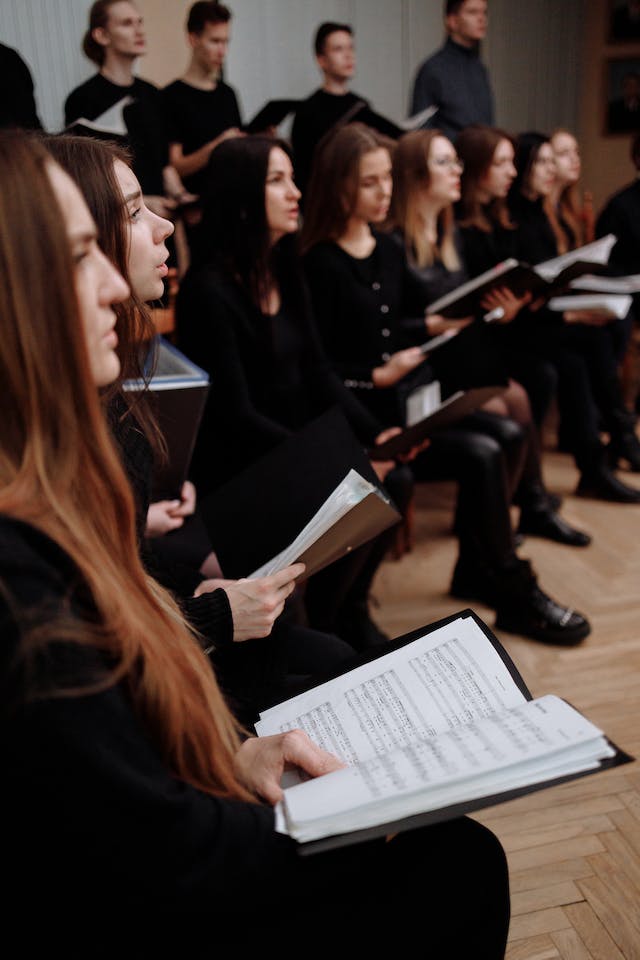
A Guide To Robert Schumann's Lieder
A Guide To Robert Schumann's Lieder
Robert Schumann, a prominent figure in the Romantic era of music, holds a special place in the hearts of vocalists and music enthusiasts for his Lieder. These compositions for voice and piano are performed at most MTNA events, in recitals, and in auditions around the world, and they are perfect for a range of voice types and skill levels. Keep reading to learn more about pieces of Schumann Lieder, and please get in touch if you would like to inquire about our vocal lessons in Houston.
Selected Works of Schumann Lieder
"Dichterliebe," Op. 48
Composed in 1840, during Schumann's 'Year of Song,' "Dichterliebe" (A Poet's Love) remains one of his most celebrated song cycles. Based on poems by Heinrich Heine, this work is a journey through love, longing, and loss. It's best suited for tenor voices, though mezzo-sopranos and baritones often perform it transposed. The cycle demands expressive sensitivity and technical control, especially in phrasing and dynamics. "Im wunderschönen Monat Mai" and "Die alten, bösen Lieder" are particularly notable for their emotional depth and vocal demands. Schumann's use of piano accompaniment not just as a support but as an equal voice adds complexity to this piece. Musicologists like Rufus Hallmark have highlighted its significance in understanding Schumann’s compositional style and emotional expression (Hallmark, "The Genesis of Dichterliebe").
"Frauenliebe und-leben," Op. 42
This song cycle, composed in 1840, is a profound portrayal of a woman's love and life, based on poems by Adelbert von Chamisso. Typically sung by mezzo-sopranos or sopranos, "Frauenliebe und -leben" offers a narrative arc from youthful love through marriage, motherhood, and widowhood. It requires a singer capable of a wide range of emotional expression, from the innocence of "Seit ich ihn gesehen" to the despair of "Nun hast du mir den ersten Schmerz getan." Vocalists like Dietrich Fischer-Dieskau have praised its depth and interpretive possibilities (Fischer-Dieskau, "Schumann: Words and Music").
"Liederkreis," Op. 39
This cycle, based on Joseph von Eichendorff’s poems and composed in 1840, is a staple for voice students and professionals. Suitable for various voice types, it's particularly resonant for baritones. The cycle ranges from the haunting "Mondnacht" to the exuberant "Frühlingsnacht," requiring versatility in tone, color, and dynamic control. The narrative and pictorial elements in songs like "Waldesgespräch" demand interpretative skills and a strong connection to the text. Vocal teachers like Richard Miller have cited "Liederkreis" as essential for developing a singer's interpretive and technical abilities (Miller, "The Structure of Singing").
"Myrthen," Op. 25
"Myrthen," a collection of 26 songs presented to Clara Wieck as a wedding gift in 1840, showcases Schumann’s romantic side. The cycle includes songs for various voice types, making it versatile for teaching and performance. Pieces like "Widmung" (often performed by sopranos) require a singer to balance technical skill with a deep sense of romantic ardor. "Die Lotusblume" appeals to mezzo-sopranos for its lyrical beauty and emotional intimacy.
"Lieder-Album für die Jugend," Op. 79
This collection, composed in 1849, is an excellent introduction to Schumann's Lieder for younger or less experienced singers. The songs, written for more modest vocal ranges, provide valuable lessons in German diction, phrasing, and Schumann’s distinctive harmonic language. "Frühlingsbotschaft" and "Schneeglöckchen" are highlights for their charming melodies and accessible vocal lines.
Individual Lieder
Beyond these cycles, Schumann composed numerous standalone Lieders. "Mondnacht," from "Liederkreis," is a favorite for its sublime melody and the fusion of voice and piano. "Du bist wie eine Blume" offers a tender, lyrical challenge for sopranos and mezzo-sopranos, while "Die beiden Grenadiere" is a dramatic piece for baritones, showcasing Schumann’s ability to depict narrative and character through music.
How Hard is Schumann’s Lieder For Singers?
Schumann’s Lieder ranges from moderately difficult to highly challenging, both technically and expressively. They require a solid technique, including breath control, dynamic range, and coloratura agility, depending on the specific piece. The emotional depth and interpretative demands make these songs more suitable for singers who can combine vocal skill with mature musical understanding.
Lasting Impact on Voice Teaching
Schumann's Lieder has profoundly influenced voice pedagogy. Teachers often use these pieces to develop a student’s technique, musicality, and interpretative skills. The songs’ demands for clear diction, emotional expression, and technical precision make them ideal for training. Furthermore, the repertoire's diversity in terms of vocal range and character provides valuable material for teaching singers of different voice types and stages of development.
In conclusion, Robert Schumann's Lieder are not just exquisite pieces of Romantic music; they are also fundamental tools in the development of a classical singer. They offer rich opportunities for vocal and emotional expression, demanding and rewarding in equal measure. Singers and teachers alike continue to explore and cherish these works, ensuring their enduring legacy in the world of art song.
Cixi Music Studio offers voice lessons in Richmond, TX, and we also have singing teachers in Pearland. We would love to hear from you and help either you or your child develop your singing ability.





